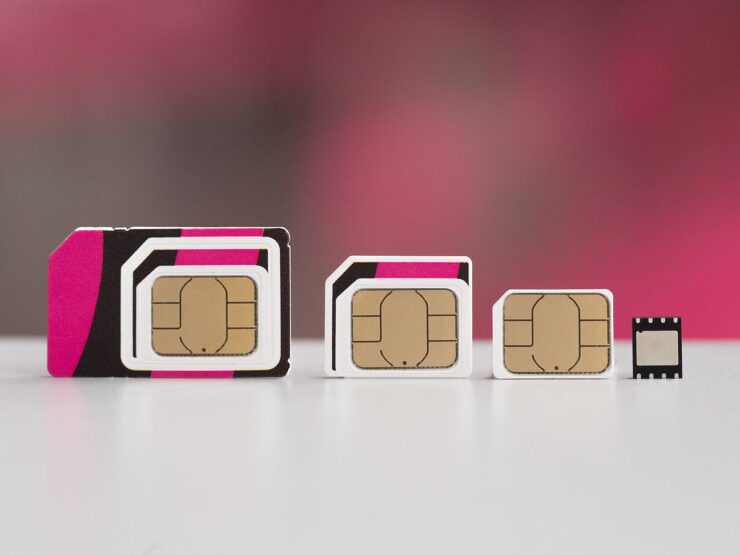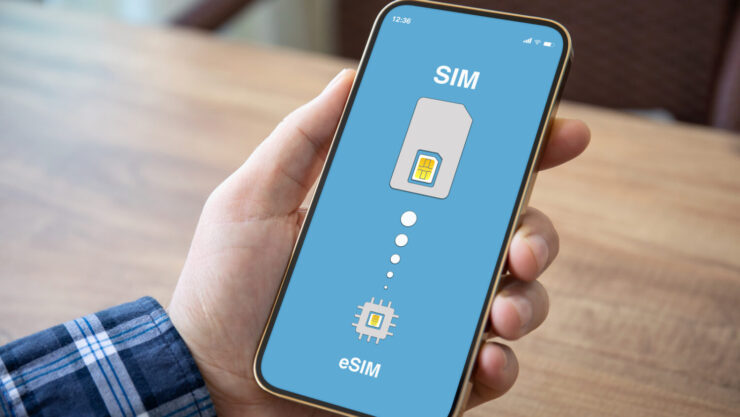With international travel on the rise again after years of pandemic restrictions, having reliable and affordable phone service abroad remains a priority for many globetrotters.
Swapping out SIM cards in your device to access local carrier networks can be clumsy and cumbersome when hopping between destinations.
However, the growing availability of embedded SIM technology – widely known as eSIM – has the potential to vastly simplify connectivity for international travelers.
eSIMs allow you to remotely download SIM profiles to access mobile networks without having to physically insert a new SIM card.
“Travel eSIMs bring greater flexibility, cost savings, and logistical ease to staying connected while traveling overseas.” J. Stevenson, TraveleSIM.com.
In this article, we’ll cover an overview of what exactly eSIMs are, their key benefits for international travel, how to set them up, and what the future may look like as eSIM adoption spreads.
What is an eSIM?

An embedded SIM, or eSIM, is a standardized SIM chip that is directly integrated into a mobile device’s chipset rather than existing as a removable module. The term eSIM reflects the fact that the SIM capability comes embedded in the phone rather than requiring a physical SIM card.
Whereas a traditional physical SIM card locks the user into the network of a single carrier, an eSIM allows for the storage of multiple profiles which can be managed remotely.
By downloading different SIM profiles, you can quickly switch between carriers and data plans – ideal when crossing countries and networks.
The eSIM specification was originally developed jointly by the GSMA and GCF mobile organizations in 2016. It was designed to be compliant with existing SIM standards, ensuring broad compatibility with cellular networks worldwide right from the start.
Benefits of Using an eSIM for International Travel
eSIM technology brings a host of advantages for international travelers who need affordable connectivity across different countries and carriers:
- No need to obtain local physical SIM cards in every destination, which can be inconvenient, time consuming and sometimes costly
- Remote SIM profile provisioning allows you to set up local network access before you even arrive in a country, minimizing roaming charges
- Since multiple SIM profiles can be stored, you can have separate eSIM plans for local calls vs international calls, data vs telephony, or mix and match across providers and countries depending on your needs
- Quick and easy to switch between SIM profiles using device settings rather than having to swap out cards
- Reduced roaming costs as it’s easy to switch to the optimal local network in each destination
- No risk of losing SIM cards and less clutter from carrying multiple cards and adapters
How to Get an eSIM

Although adoption is still in the relatively early stages, more mobile devices, carriers, and destinations now support eSIM functionality:
- Most newer model iPhones, Google Pixel and Samsung Galaxy smartphones, and cellular-enabled iPads and watches are eSIM-compliant
- Leading US carriers including Verizon, AT&T and T-Mobile offer eSIM plans, as do major international carriers
- Users can set up an eSIM by signing into their carrier account or app and following the step-by-step provisioning process
- Third party eSIM providers such as Airalo allow you to conveniently buy international data packages online and upload profiles over-the-air
When choosing an eSIM for travel, look for providers that offer flexibility, low-cost international day passes for data/calling, and support networks in your destination countries.
Activating eSIMs Abroad
One of the biggest advantages travelers can gain from switching to eSIMs is the ability to set up network access abroad remotely before even leaving home:
- Weeks or days before your trip, you can download SIM profiles to your device over WiFi using your carrier or third party eSIM provider’s app
- With the profile installed, you can then activate your eSIM foreign plan as soon as you arrive abroad while still connected to WiFi or using your existing cellular data connection
- Some eSIM providers allow you to instantly purchase and install plans after landing in a foreign country as an alternative to pre-loading profiles
- Certain carriers may require you to scan a QR code in person at a mobile shop or kiosk location as part of the activation process
With a little planning, you can minimize roaming charges and gain immediate local network access thanks to eSIM flexibility.
Using Multiple eSIM Profiles

Another key perk of eSIMs is having the ability to manage multiple network profiles on one device. This allows you to optimize connectivity based on different travel scenarios:
- Separate domestic and international profiles – keep your existing home carrier plan as primary, add eSIM profiles just for foreign trips
- Switch between profiles optimized for best local calling, texting and data rates as you cross borders
- Assign data-only eSIM plans for some destinations to keep data costs down
- Use different profiles for backup or redundancy in areas with poor network coverage
- Configure profiles from the same carrier to ring simultaneously and direct calls based on lowest cost
With easy eSIM profile switching at your fingertips, you can cost-effectively adapt your phone network access based on wherever your travels take you.
The Future of eSIMs and Travel
While eSIM adoption is still gradually rolling out worldwide, the technology holds exciting potential to fundamentally change how we connect mobile devices globally in the future:
- As more devices and networks add eSIM support, physical SIM cards could be eliminated entirely down the road
- eSIM profiles may allow travelers seamless connectivity across smartphones, tablets, laptops, watches, and more linked to the same account
- Widespread eSIM availability could enable ultra-flexible, affordable roaming across networks and borders
However, there are still challenges ahead for eSIMs to become ubiquitous:
- Carriers will need motivation to support eSIM plans and activation across all networks fully
- Universal standards for profile transfers between operators are still in progress
- User awareness of eSIM benefits remains relatively low
Even if adoption is gradual, eSIM technology marks an exciting evolution for international travelers who need the flexibility and cost savings of local network access on the go.
For globetrotters who have struggled with the hassles and roaming fees associated with physical SIM cards, eSIM technology offers a streamlined new approach to staying connected abroad.
With the power to remotely download and manage multiple cellular network profiles from your smartphone settings, eSIMs simplify the logistics of international phone and data access logistics.
As eSIM usage gains traction worldwide, travelers can look forward to enhanced convenience, reduced roaming charges, more flexibility to customize plans on the fly, and the potential to link seamless connectivity across all their devices in the future. Though there are still challenges ahead, eSIMs are positioned to be a game changer that can make travel sans borders feel borderless too.

